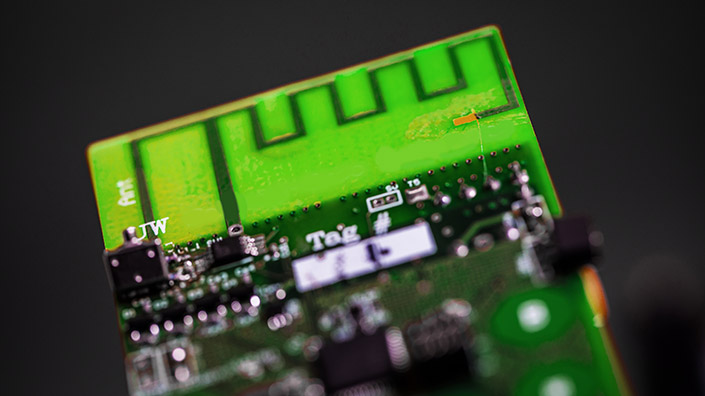On a Tuesday night in August, hundreds of people were stranded outside Euston station in central London, strung out in small groups along the main road. Dozens of armed police officers swept the perimeter. The station was evacuated and trains were stopped, causing delays across the country as far north as Manchester. The reason? A small explosion caused by a malfunctioning battery in an e-cigarette.
Batteries are everywhere in our connected, mobile world. They’re in our watches and smartphones. Soon they’ll be driving our vehicles, and powering the sensors that will take and transmit measurements from every facet of the world as part of the much-hyped Internet of Things.
But batteries are also becoming a bit of a nuisance. They’re heavy and expensive, accounting for as much as 60% of the cost of an electric vehicle. They’re hard to recycle – and one estimate puts the number of button batteries being produced for things like musical birthday cards at 30 billion a year. And they’re volatile – as evidenced by the bomb scare at Euston and dozens of other incidents, from car fires to phone explosions.
Battery technology has become a bottleneck for engineering and technology. It’s a limiting factor that’s holding back progress in a number of areas – from long-haul electric vehicles to drone deliveries, to renewable energy.
Understandably, most research has focused on finding ways to make batteries better. Scientists from all over the world have been exploring supercapacitors that can charge in seconds, and new energy-dense materials that seek to make energy storage cheaper and safer.
But that might not be enough for the connected world we want to build. No matter how good batteries become, they will eventually need to be changed. Paul Egan of Cambridge firm 8power says this is “the elephant in the room” for the Internet of Things. “The maintenance of these things can often kill the business case for them if you have to send a man in a van to change the batteries or charge the device,” he says. “Those costs are often more than the cost of deploying the system.”
So while progress is being made on battery technology – spurred on by initiatives such as the UK government’s £246m Faraday Challenge – another, smaller set of engineers and companies is approaching the problem from a very different direction. Instead of making batteries smaller and cheaper, they’re trying to get rid of them completely.
 The battery-free phone uses 10 000 times less power than a regular mobile phone (Credit: University of Washington)
The battery-free phone uses 10 000 times less power than a regular mobile phone (Credit: University of Washington)
AAA-WOL
“The problem we've been trying to solve is how to power wireless devices that we want to leave in the field for a large amount of time,” explains Egan. 8power’s technology harvests energy from the vibrations from roads, rotating machinery and railway networks, and uses electrodynamics to generate electricity with magnets that move past coils.
The company was spun out from the University of Cambridge, where researchers discovered a way of increasing the amount of electricity that could be generated by taking advantage of a phenomenon called parametric resonance. This involves changing the pivot point of the magnet and proof mass as it vibrates to amplify its movements – Egan describes it as being similar to when a child on a swing in the playground kicks their legs back and forth to increase their speed.
8power’s sensors have been tested on the Forth Road Bridge in Scotland, where they were able to generate enough power from the cars passing over the structure to run a temperature sensor and transmit the data over wi-fi. Right now, the devices still have a battery, but mostly as a back-up. The same technology can also be used on railway lines, or to monitor the condition of electric motors and pumps – anything where there’s a predictable and frequent type of vibration. Egan says it could also be used to keep track of unpowered assets such as shipping containers.
Energy harvesting technology is also – slowly – working its way into our homes. German company EnOcean sells several harvesting technologies to companies such as IBM and Honeywell, which make devices such as thermostats.
There are kinetic harvesters, which can be used to create wireless light switches that can send a signal using only the power generated from someone pressing the switch. There are energy harvesters that work using a heat differential – these can be used to create thermostats that don’t need to be wired in. And there are solar-powered devices, tuned to the wavelengths of indoor light.
The company has been around since 2001, but development has sped up in recent years, according to sales director John Corbett. Devices have been optimised using high-speed capacitors to do more things, and last for longer with no power coming in.
“The biggest application we’ve got is the Internet of Things,” says Corbett. “We have seen a sea change – not so much in the harvesters, but in how the harvesting technology is being used. A thing that used to turn on a light is not a thing that can detect whether people are there and then turn on a light.” This improved technology is allowing battery-free sensors to be used for everything from monitoring the condition of hip implants to wirelessly tracking falcons.
 The Forth Road Bridge close to Edinburgh (Credit: iStock)
The Forth Road Bridge close to Edinburgh (Credit: iStock)
Your body the battery
Wearable technology and biomedical implants are other areas where batteries are becoming a bit of a hindrance, because they’re often rigid and uncomfortable as well as potentially toxic. As work has progressed on electronics woven into textiles, researchers are looking at ways of building wearables that draw their power from the wearer.
“You can harvest energy from the environment around the individual, or from the individual themselves,” says Steve Beeby, a professor of electronics at the University of Southampton. Plenty of wristwatches can already charge themselves simply from the wearer’s motion, working in a similar way to 8power’s vibration technology.
But humans don’t move at predictable frequency (and don’t tend to vibrate) so developers of new technology are looking at directly harvesting more energy from movements such as walking. However, if you try to extract too much energy that way you can start to impact on the movement itself. “There’s another challenge around the fact that we don’t move that much a lot of the time,” says Beeby.
Some of the more outlandish attempts to harness power from the body include efforts to harvest energy from sweat, and there’s even preliminary research going on into generating power from the movement of blood around the body using tiny nanotubes.
No matter how optimised energy harvesters get, there is a practical limit to how much power can be extracted from things like the flicking of a switch or the beating of someone’s heart. “The problem with any form of energy harvesting is that it’s not a lot of energy to do something with,” says Corbett. “To actually make a radio work we had to design our own.”
Consequently, much of the progress in the area has been driven from other industries and new low-powered technologies such as e-ink screens, which only need energy when they change state. As smartphone manufacturers such as Apple and Samsung strive to make their products more powerful while maintaining battery life, they’ve been developing a host of cheap, thin and low-powered sensors and devices and unwittingly paving the way for something truly revolutionary.
Future calling
There are no apps. It doesn’t have a camera or fingerprint recognition. It’s not even very good at phone calls – the voices sound crackly and compressed, and you can’t talk and listen at the same time.
But the University of Washington’s ‘battery-free cellphone’ could represent a much more significant technological advance than the recently announced iPhone X. Seeing the phone make its first call was an “exhilarating experience,” says Vamsi Talla, who worked on the project. “Words can't describe the feeling of satisfaction and accomplishment the team felt. It had been a long time coming and we had actively worked on this project for 12-15 months.”
It works by harvesting ambient power from radio signals. “We’re surrounded by radio waves from wi-fi networks and televisions,” explains Beeby, who was not involved in the research. “They’ve got an antenna that’s capturing the wavelengths at a particular frequency and it’s a tuned antenna to maximise the amount of energy that they can pick up. They are storing that energy in a capacitor and building up a reservoir to power a very low-power phone.”
The low-power aspect is the key breakthrough – the device uses 10,000 times less power than a typical phone. “To achieve the really, really low power consumption that you need to run a phone by harvesting energy from the environment, we had to fundamentally rethink how these devices are designed,” said Shyam Gollakota, an associate professor at the University of Washington and a co-author on the research.
The team was able to reduce the power required to just a few microwatts. “Now with such low power consumption it's feasible for our battery-free phone prototype to continuously operate in real time by harvesting power from either the ambient RF signals transmitted by the base station or to use a tiny photodiode to harvest ambient light,” says Talla.
The other potential issue is a legal one, which is why firms such as EnOcean are wary of adding RF to their array of harvesting technologies. “There’s an arguable case that you’re stealing power from a transmitter that’s not yours,” says Corbett. “You’d need a lot of people to have a big effect on it, but you could argue that you’re stealing the wi-fi signal.”
This technology is unlikely to be powering apps or internet browsing, but Talla says it could be used to give phones a ‘battery free’ mode for use in emergencies, and he’s working on a spin-out company called Jeeva Wireless aimed at commercialising very low-powered wireless communications.
“As electronics continue to reduce in power consumption, energy harvesting becomes more applicable, and you can see practical devices in the next five years,” says Beeby. Energy harvesting is also getting better, with new avenues being explored all the time. Today it’s vibration and solar power, but tomorrow’s devices could be powered by rainfall or sound. Taken together, these developments have the potential to eliminate batteries – maybe not in cars or computers – but in the small, perpetual sensors that will create a connected, unplugged world.

From dawn to dusk... lizards, which are only active during the day, are inspiring new power-saving technology (Credit: iStock)
Dawn of the lizard robots
Renewable energy is the ultimate form of energy harvesting, but it’s another area being held back by a lack of storage options. One potential solution, according to Peter Harrop of IDTechEx, which published a recent report on eliminating batteries, is to design technology that works around the peaks and troughs of sources such as solar.
This could include ‘lizard’ vehicles that are only active during daylight hours – not so great for buses and cars, but ideal for something like a golf cart. “It wakes up with the sun,” says Harrop.
Another example is the agricultural industry’s Vinerobot, which takes measurements of leaf mould, ground acidity and temperature from grapevines. “It doesn’t have many solar cells, but there are enough for them to bumble along through the vines. They don’t need to work at night.”
(Lead image credit: Getty/iStock)